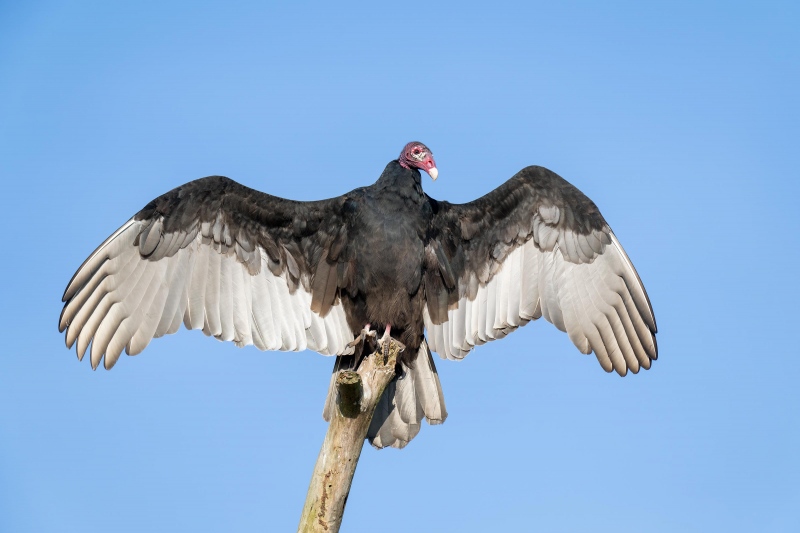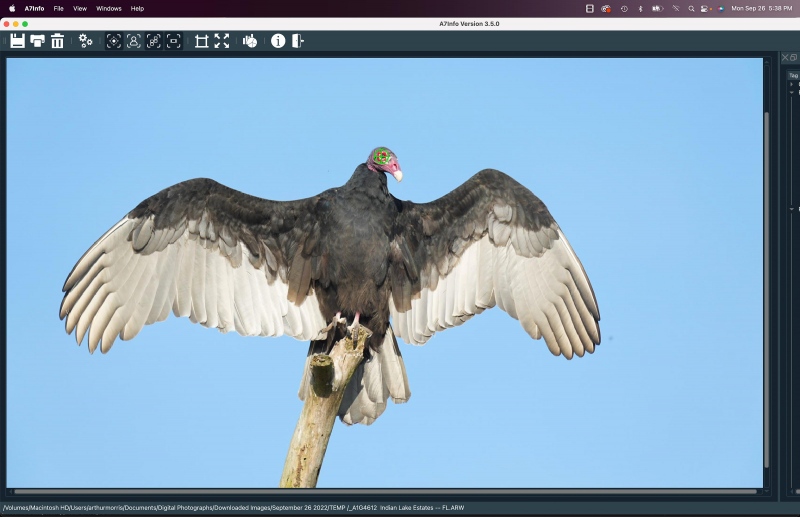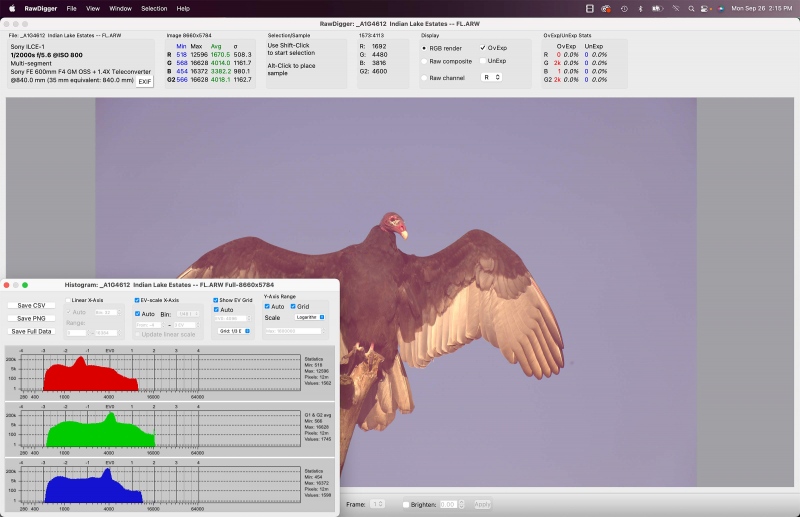Change Your Life
Consider changing your life and becoming a much better bird photographer by joining me on a BIRDS AS ART Instructional Photo-Tour (IPT). DeSoto, San Diego, Homer, and the yet-to-be announced July 2024 Galapagos Photo-Cruise of a Lifetime, all offer the opportunity for you to improve your skills both in the field and at the computer and to make some astounding images as well. Click here and see which IPT might be best for you.
|
Fort DeSoto in fall is rife with tame birds. All the images on this card were created at Fort DeSoto in either late September or very early October. I hope that you can join me there this fall. Click on the composite to enjoy a larger version. Clockwise from upper left to center: Long-billed Curlew, Marbled Godwit, Caspian Tern, Great Egret, Sandwich Tern with fish, Willet, Black-bellied Plover threat display, Snowy Egret, 2-year old Yellow-Crowned Night-Heron, juvenile Yellow-Crowned Night-Heron. |
The Fall 2022 Fort DeSoto Instructional Photo-Tours
Fall 2022 Fort DeSoto Instructional Photo-Tour #2
3 1/2 Days: 7 October through the morning session on Monday 10 October 2022. $1899.00 includes three working lunches. Limit six photographers/Openings three.
Fall 2022 Fort DeSoto Instructional Photo-Tour #3
3 1/2 Days: Monday 31 October through the morning session on Thursday 3 November 2022. $1899.00 includes three working lunches. Limit six photographers/Openings: 5.
Fort DeSoto, located just south of St. Petersburg, FL, is a mecca for migrant shorebirds and terns in fall. There they join hundreds of egrets, herons, night-herons, and gulls that winter on the T-shaped peninsula. With any luck at all, we should get to photograph one of Florida’s most desirable shorebird species: Marbled Godwit. Black-bellied Plover and Willet are easy, American Oystercatcher is pretty much guaranteed. Great Egret, Snowy Egret, Great Blue Heron, Tricolored Heron, and White Ibis are easy as well and we will almost surely come up with a tame Yellow-crowned Night-Heron or two. And we will get to do some Brown Pelican flight photography. In addition, Royal, Sandwich, Forster’s, and Caspian Terns will likely provide us with some good flight opportunities as well. Though not guaranteed, Roseate Spoonbill and Wood Stork might well be expected. And we will be on the lookout for a migrant passerine fallout in the event of a thunderstorm or two.
On this IPT, all will learn the basics and fine points of digital exposure. Nikon and Canon folks will learn to get the right exposure every time after making a single test exposure, and SONY folks will learn to use Zebras so that they can be sure of making excellent exposures before pressing the shutter button. Everyone will learn how to approach free and wild birds without disturbing them, to understand and predict bird behavior, to identify many species of shorebirds, to spot the good situations, to choose the best perspective, to see and understand the light, and to design pleasing images by mastering your camera’s AF system. Most importantly, you will surely learn to evaluate wind and sky conditions and understand how they affect bird photography. And you will learn how and why to work in Manual mode (even if you’re scared of it). The best news is that you will be able to take everything you learn home with you so that you will be a better photographer wherever and whenever you photograph.
There will be a Photoshop/image review session during or after lunch (included) each full day. That will be followed by Instructor Nap Time.
These IPTs will run with only a single registrant (though that is not likely to happen). The best airport is Tampa (TPA). Once you register, you will receive an e-mail with Gulfport AirBnB information. If you register soon and would like to share an AirBnB with me, shoot me an e-mail. Other possibilities including taking a cab to and from the airport to our AirBnB and riding with me. This saves you both gas and the cost of a rental car.
A $600 deposit is due when you sign up and is payable by credit card. Balances must be paid by check two months before the trip. Your deposit is non-refundable unless the IPT sells out with six folks, so please check your plans carefully before committing. You can register by calling Jim or Jennifer during weekday business hours at 863-692-0906 with a credit card in hand, or by sending a check as follows: make the check out to: BIRDS AS ART and send it via US mail here: BIRDS AS ART, PO BOX 7245, Indian Lake Estates, FL 33855. You will receive a confirmation e-mail with detailed instructions, clothing, and gear advice. Please shoot me an e-mail if you plan to register or if you have any questions.
|
Clockwise from upper left to center: Long-billed Curlew, juvenile Tricolored Heron, Marbled Godwits, Great Blue Heron, juvenile Pectoral Sandpiper, Wood Stork, smiling Sea Scallop, Ruddy Turnstone scavenging needlefish, Great Blue Heron sunset silhouette at my secret spot, and southbound migrant tern flock blur. |
Up Early, Stay Out Late!
Obviously, folks attending an IPT will be out in the field early and stay late to take advantage of the sweetest light and sunrise and sunset colors (when possible). The good news is that the days are relatively short in early fall. I really love it when I am leaving the beach on a sunny morning after a great session just as a carful or two of well-rested photographers are arriving. The length of cloudy morning sessions will often be extended. Click on the composite to enjoy a larger version.
Spoonbills at DeSoto
Over the past years, Roseate Spoonbills have become regular visitors to Fort DeSoto Park. I know when and where to find them and can teach you to approach them successfully. Do consider joining me on one of the DeSoto IPTs.
What’s Up?
I slept late and skipped my morning walks, but spent a pleasant 45 minutes at the Vulture Trees. I did my easy 48-length morning swim after 1pm. My planned afternoon 40-length swim was cancelled by a nonstop deluge accompanied by thunder and lightning from 4:30 till after 7:00pm. Today is definitely Tuesday 27 September 2022. Wherever you are, and whatever you are doing, I hope that you too have a great day. This blog post took about 90 minutes to prepare makes one hundred eighty-six days in a row with a new one.
Please remember to use the B&H and Amazon links that are found on most blog pages and to use the BIRDSASART discount code at checkout when purchasing your new gear from Bedfords to get 3% back on your credit card and enjoy free second-day air FedEx. Please, also, consider joining a BAA IPT. You will be amazed at how much you will learn!
Follow me on Instagram here. I am trying to feature both new and old images, especially images that have not appeared recently on the blog. Or search for birds_as_art.
BIRDS AS ART Image Optimization Service (BAA IOS)
Send a PayPal for $62.00 to birdsasart@verizon.net or call Jim at 863-692-0906 and put $62.00 on your credit card. Pick one of your best images and upload the raw file using a large file sending service like Hightail or DropBox and then send me the link via e-mail. I will download and save your raw file, evaluate the exposure and sharpness, and optimize the image as if it were my own after converting the raw file in Adobe Camera Raw. Best of all, I will make a screen recording of the entire process and send you a link to the video to download, save and study.
Induro GIT 304L Price Drop
Amazingly, we have two, brand-new-in-the-box Induro GIT 304L tripods in stock. They are $699.00 each (were $799.00) and the price now includes the insured ground shipping to the lower 48 states. Weekday phone orders only: 863-692-0906. Order yours here while they last.
Over-exposed? Or Not? Best-yet TV Sunning Image
|
|
|
This image was created on 26 September 2022 down by the lake near my home at ILE. Standing at full height, I used the no-longer available (except from BAA) Induro GIT 304L tripod/Levered-Clamp FlexShooter Pro-mounted Sony FE 600mm f/4 GM OSS lens with the Sony FE 1.4x Teleconverter (at 840mm), and The One, the Sony Alpha 1 Mirrorless Digital Camera.. ISO 800. The exposure was determined by Zebras with ISO on the rear wheel: 1/2000 second at f/5.6 (wide open) in Manual mode. RawDigger showed that the exposure was dead-solid perfect plus. AWB at 8:38:08am on sunny morning. Tracking: Spot S/AF-C with Bird-Eye/Face Detection performed perfectly. Click on the image to enjoy the high-res version. Image #1: Turkey Vulture — adult sunning |
Not Bad
I have spent lots of time at the Vulture Trees in the past few weeks, not to mention the last two plus decades. Today’s wing spread/facing/sunning image is the best of that ilk I have made. The sweet early morning light and the perfectly lit underwings along with a handsome adult vulture are all big plusses. As is the perfect wingspread pose. And I almost forgot, the bird was on my very favorite perch, the tip-top perch.
|
|
Image #1A: The a7INFO screen capture for the Turkey Vulture — adult sunning image |
Sony a1 Firmware Update v.1.31
More than a week ago, I updated both of my a1 bodies to firmware v1.31 and then spent some quality time at the Vulture Trees. I felt that firmware update 1.30 noticeably improved Bird-Eye autofocus. According to Sony, the latest firmware update, v1.31, offers two benefits and improvements: It improves the accuracy of the Eye AF feature and improves the operational stability of the camera. With several addition sessions with the new firmware, I can firmly stand that improvement in Bird-Eye AF with v1.31is quite significant.
When you point a long lens at a bird, the a1’s AF system searches for the eye before you press or half-press the shutter button! When an eye is detected, a tiny green square lights up and tracks it. With v1.31, the system picked up the bird’s eye more quickly, and once you half-pressed the shutter button the eye tracking clearly seemed to be stickier.
No matter how great the eye tracking of your mirrorless camera body, two things will always be true:
1- When the bird turns its head away or buries it in its feathers while preening, the AF system will obviously quit tracking the eye. With v1.31, the AF system picked the eye up very quickly once it re-appeared.
2- Strong folks with excellent hand-eye coordination, fine motor control, fast reflexes, and great stamina will always get better results than the rest of us. They are better equipped to take advantage of the amazing new AF technologies that are available to us.
I am positive that Bird-eye AF for flight photography will be improved, the question is, “By how much?” With the first DeSoto IPT cancelled by Hurricane Ian, it will be another two weeks before I can answer that question. There is lots of good flight photography at DeSoto.
|
|
Image #1B: The RawDigger screen capture for the Turkey Vulture — adult sunning image |
Over-exposed? Or Not?
The OvExp/UnExp Stats show 4001 over-exposed pixels out of 41 million. If my math is correct, that is 0.001% OvExp. Click on the screen capture to enlarge it and see if you can spot the red OvExp warnings. Where are they?
That said, would you have subtracted 1/3-stop of light from the exposure? Why or why not?
Ho Hum, Another Perfect Exposure
What can I say? The combination of Zebras live in the viewfinder (with your camera set up properly) and post-capture study of the raw files in RawDigger makes it pretty much child’s play to come up with perfect exposure after perfect exposure. It would be impossible to overstate how much I have learned by studying RawDigger and how much better my exposures have become since I started with the program almost two years ago. The raw file brightness for today’s featured image is dead solid perfect plus a tiny bit with the G channel climbing up the 16000 line (as discussed immediately above).
RawDigger — not for the faint of heart …
Nothing has ever helped me learn to create perfect exposures to the degree that RawDigger has. I think that many folks are reluctant to learn that most of their images are underexposed by one or more full stops and that highlight warnings in Photoshop, Lightroom, Capture One, and your in-camera histogram are bogus as they are based on the embedded JPEGs. Only your raw files tell the truth all the time. Heck, I resisted RawDigger for several years … Once you get over that feeling, RawDigger can become your very best exposure friend no matter what system you are using. On the recent IPTs and In-the-Field sessions, we have demonstrated that fact. Convincingly.
The RawDigger Adapted (pink) Histogram
In the RawDigger e-Guide, you will learn exactly how to set up the Adapted “pink” RawDigger Histogram and how to use it to quickly and easily evaluate the exposure or raw file brightness of images from all digital cameras currently in use. RawDigger was especially helpful to me as I have struggled with R5 exposures and learned my new camera body, the Sony Alpha a1.
|
|
RawDigger e-Guide with Two Videos |
The RawDigger e-Guide with Two Videos
by Arthur Morris with Patrick Sparkman
The RawDigger e-Guide was created only for serious photographers who wish to get the absolute most out of their raw files.
Patrick and I began work on the guide in July 2020. At first, we struggled. We asked questions. We learned about Max-G values. We puzzled as to why the Max G values for different cameras were different. IPT veteran Bart Deamer asked lots of questions that we could not answer. We got help from RawDigger creator Iliah Borg. We learned. In December, Patrick came up with an Adapted Histogram that allows us to evaluate the exposures and raw file brightness for all images created with all digital camera bodies from the last two decades. What we learned each time prompted three complete beginning to end re-writes.
The point of the guide is to teach you to truly expose to the mega-Expose-to-the-Right so that you will minimize noise, maximize image quality, best utilize your camera’s dynamic range, and attain the highest possible level of shadow detail in your RAW files in every situation. In addition, your properly exposed RAW files will contain more tonal information and feature the smoothest possible transitions between tones. And your optimized images will feature rich, accurate color.
We teach you why the GREEN channel is almost always the first to over-expose. We save you money by advising you which version of RawDigger you need. We teach you how to interpret the Max G values for your Canon, Nikon, and SONY camera bodies. It is very likely that the Shock-your-World section will shock you. And lastly — thanks to the technical and practical brilliance of Patrick Sparkman — we teach you a simple way to evaluate your exposures and the raw file brightness quickly and easily the Adapted RawDigger histogram.
The flower video takes you through a session where artie edits a folder of images in Capture One while checking the exposures and Max-G values in RawDigger. The Adapted Histogram video examines a series of recent images with the pink histograms and covers lots of fine points including and especially how to deal with specular highlights. The directions for setting up the Adapted Histogram are in the text.
If we priced this guide based on how much effort we put into it, it would sell it for $999.00. But as this guide will be purchased only by a limited number of serious photographers, we have priced it at $51.00. You can order yours here in the BAA Online Store.
Typos
With all blog posts, feel free to e-mail or to leave a comment regarding any typos or errors.




















Shannah Tovah, Artie to you and your family!
I suspect that the over-exposed pixels involve the rachis of one of the feathers on the left wing. FWIW, I don’t worry about those slight specular highlights and they are easily tamed for print by reducing the whites from 255 to something like 252 thereby forcing the printer to lay down a bit of ink in those areas.
Canon’s lack of real time zebras reduces my ability to nail the exposure precisely and is a big plus for Sony. So would I have intentionally reduced the exposure by 1/3rd? No, I would have aimed to have achieved ideal exposure but shooting my Canon most likely it would have ended up slightly under-exposed.
Artie
Beautiful Art!! 🙂 😀
The reds over exposed are immeadiatly left of the eye.
What you really don’t need by y’all is more rains, hope the storm is soft and all are safe!
What is a rope flow walk?
Always with love b
Thanks for commenting, Bob. The red near the eye is the bird :). Look more carefully for red where there should not be any.
I will bring my rope to Homer 🙂 In the meantime, check here.
with love, artie